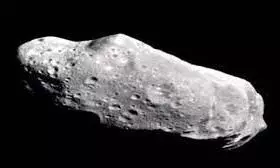
NASA captures detailed view of asteroid that got too close to Earth
text_fieldsWashington: Earlier this month, an asteroid called 2011 AG5, more than three times as long as it is wide, safely flew past Earth at a distance of about 1.8 million km. That is a little under five times the distance between the Moon and Earth. Scientists at NASA have now captured a detailed view of the rock.
NASA's Jet Propulsion Laboratory in Southern California has been tracking the space object since January 29 to understand its size, rotation, surface details, and shape. It was first discovered in 2011 but experts did not get a closer look until now.
The 230-foot (70-meter) Goldstone Solar System Radar antenna dish at the Deep Space Network's facility near Barstow found that the asteroid is about 1,600 feet (500 meters) long and about 500 feet (150 meters) wide. The extremely elongated object is oblong. "Of the 1,040 near-Earth objects observed by planetary radar to date, this is one of the most elongated we've seen," said Lance Benner, principal scientist at JPL.
As per the observations, there is a broad concavity in one of its two hemispheres. It also has subtle dark and lighter regions which suggest that small-scale surface features are present. However, it appears as dark as charcoal to human eyes, reported psy.org.
Paul Chodas, the director for CNEOS at JPL, said the initial analysis showed a small chance of a future impact but new measurements ruled out that possibility. 2011 AG5 has a slow rotation rate of nine hours and orbits the Sun every 621 days. It will not come close to Earth until 2040. Even then, the asteroid will safely pass the planet at a safe distance of 1.1 million kilometers, or nearly three times the Earth-Moon distance.
























